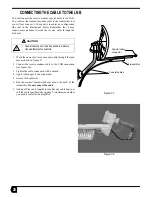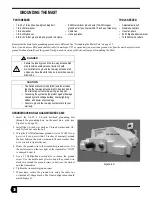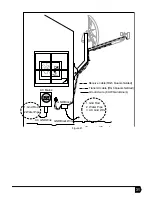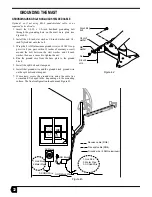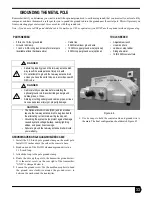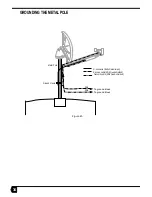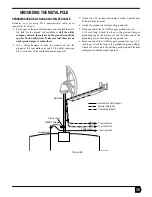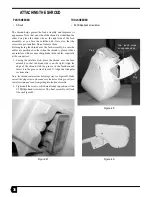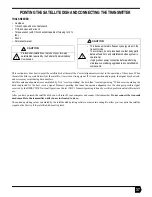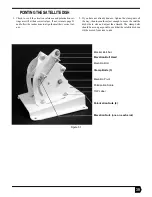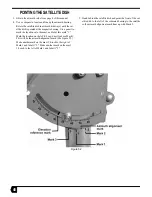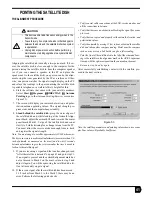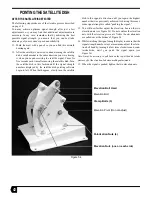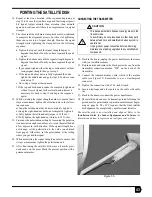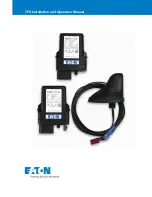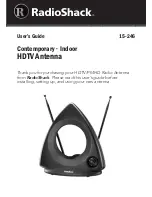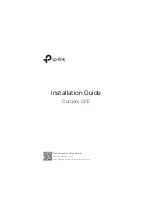
42
POINTING THE SATELLITE DISH
AFTER THE SATELLITE IS DETECTED
The following steps make use of the iterative process described
on page 38.
You may achieve optimum signal strength after just a few
adjustments, or you may find that additional adjustments are
necessary. In any case, remember that by achieving the best
possible signal strength, you ensure that you can best take
advantage of your system's speed and reliability.
11. Mark the mast with a pencil so you can find this azimuth
bearing again.
12. After the satellite is detected, continue turning the satellite
dish a small amount in the same direction you were turning
it when you began receiving the satellite signal. Pause for
five seconds each time after moving the satellite dish. Turn
the satellite dish in this fashion until the signal strength
numbers displayed by the satellite dish pointing software
begin to fall. When that happens, slowly turn the satellite
dish in the opposite direction until you regain the highest
number that was previously achieved. Achieving this maxi-
mum signal strength is called “peaking the signal.”
13. You will now further adjust the elevation. Loosen the two
elevation nuts (see Figure 54). Do not confuse the elevation
nuts with the elevation pivot nuts. Notice the elevation nuts
are called out at the bottom of Figure 54.
14. While watching the signal strength display to ensure that the
signal strength number stays at maximum, adjust the eleva-
tion bolt head by turning it a few turns clockwise and coun-
terclockwise, until you peak the signal again (see
Figure 54).
Note: It may be necessary to pull back on the top of the dish to take
pressure off of the elevation bolt when making adjustments.
15. When the signal is peaked, tighten the two elevation nuts.
Figure 54
Elevation Bolt Head
Clamp Bolts (3)
Elevation Pivot (Do not adjust)
Elevation Bolt
Polarization Nuts (4)
Elevation Nuts (one on each side)
Summary of Contents for DiRECWAY DW4000
Page 4: ...iv ...

